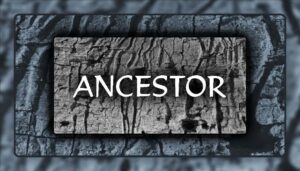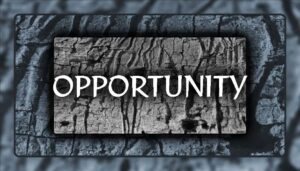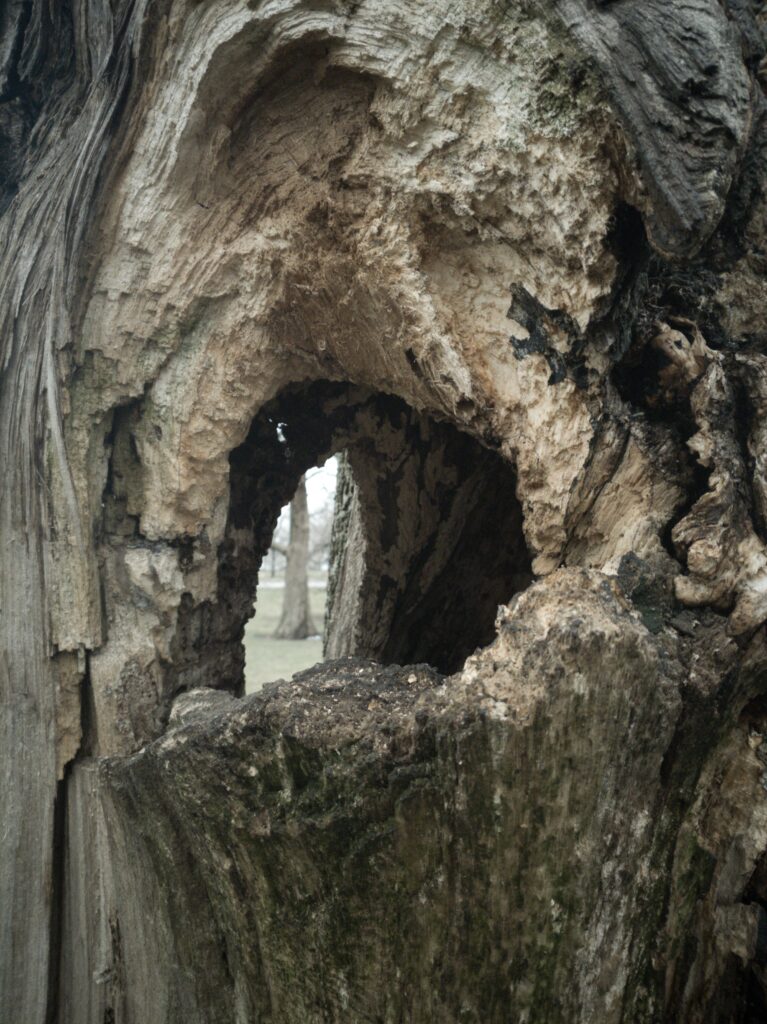
I’m sitting here, in this Covid world, experiencing its emotional ups and downs while I watch all the things that are shaken loose as the slowing down caused by the pandemic, beats the bushes. My mind wanders to my own design process and the things I think are important. The intensity of some of this may change from day to day, and even my mind might change, but the needs being exposed remain with me as I build a relationship with them.
I was exposed to design by accident. It was a survival tool that came about from seeking to create spaces of safety and to see myself and awesome and not disposable. It was something I did to center myself. At the time, I didn’t have any fancy words for my processes or results. It was just fun or not fun. Anything that gave me new ideas that could be further dismantled was awesome. Anything that blockaded my thoughts and creative flow was abandoned for a time. I was a kid making do with the meager resources I had around me. I was just creating to make safe spaces while danger and trauma swirled all around me. Along the way I was lucky enough that my doings caused me to meet some incredible people who gave me deeper insights. Without those people I don’t know how deep into it all I would have gotten.
For the longest time, I didn’t even know that this was a thing I could do. As I consider the fact that something which was invisible to me, but also noticeably nourishing to me and right feeling, became my life in so many ways, it makes me acknowledge that I don’t know how accessible the field of design is to minority and marginalized populations.
That’s not to say that I don’t think minority peoples don’t do art and design or aren’t cut out for it. What I’m saying is that that access to it, as lifestyle or profession, is a bit obfuscated, physically and culturally, even though it shows up heavily in our activism spaces and is all around us.

I do think that many marginalized populations, in the face of colonizer expectations, look at it less often as a way to be sustainable and are instead often stuck in a generational consumer space where they choke down the colonization that is force fed to them. Any elder who survived reallocation and reservation schools will tell you that’s how you survive. You learn to swallow the nasty stuff. Any elder who remembers the days of slavery, Jim Crow, The Geary Act, Segregation, labor trafficking can tell you that you survive by feeding it to your children, normalizing it, so that they don’t stand out and attract too much attention.
The problem that arises is that eventually that survival becomes habit, and then turns into new tradition, which then becomes what has always been at which point it becomes sacred and untouchable and taboo to be critiqued. The idea of something being so sacred that we can’t reexamine it to see if it serves or laugh at the places where it awkwardly interacts with the now, is us being complicit in our own cultural auto-asphyxiation. Those of us who align with what are often called tricksters perspectives know that this is a vital part of our growth as humanity. Without it we suffocate. We can’t breathe and we don’t know why.

So, returning to play and design, for many of our parents, any kind of art or play was seen as disposable. It was not seen as a success/survival space the same way that being a businessperson or a doctor or lawyer is. Being a businessperson or a lawyer or a doctor were tangible, performable roles that put your assimilation on full display and they gave you some semblance of respect from the colonizing macro-culture. In the few places that being an artist, or writer, or designer was seen as a success/survival space, the presumption is that to be successful with it we must leverage it in a capitalist business space which means we still are forcing our expressions of the world to fit into colonizer models. However we’re strangely proud of those who pulled off artistry and became story changers. I can’t tell you how many times I’ve heard Black people laude Josephine Baker in one breath and then flip around and look through a religious centered, whorephobic, colonial lens and impugn her as a loose woman. They tell us to not be like that while failing to realize it was her own agency over her sexuality, and pride in her Black body, that lifted and emancipated her, while others around her struggled. Some roles that have a lot of healing power wind up being anathema while others that actively exhaust us are seen as tried and true and reliable.

While those tried and true roles can lead to economic survival, or put us in places to create policy, they are also problematic for a variety of reasons but mainly because it still leaves us defined by our spaces of oppression and puts us back to surviving in spite of, instead of thriving because of. I feel like this means we miss out on a heck of a lot of design and creation lenses because of it. Our capacities for worldbuilding and transformation on a day to day is diminished as a result.
World building is important. It’s big medicine. It’s the way our ancestors made sense of existence and passed down lessons of their experiences and perceptions. Spaces are created where we can imagine ourselves as successful, or valued, or strong, or loved and plant seeds for the enactments in the real world.
When I talk to people about worldbuilding, design and play, one of my biggest questions is “What do we look like outside of the roles allocated by colonizer influences.” Also, I ask of myself whenever I create: “Can we design in ways that are inclusive but don’t center colonial ideals.”
So much of what we do exists in the shadow of, and in reflection of, that colonial macro-culture. How could it not? For so many of us survival has been the definition of existing in this space and that survival, typically, has revolved around accepting, or building a relationship with, the roles defined for us as acceptable by colonizer culture are so that we are palatable and non-threatening to the macro-culture.
When I create now, I do it more often than not to ask people to look at their own people’s stories and think about what they can reclaim from those old stories to move them into the future. This is much harder to do at first glance than it seems. So many old stories have been retold and affected/infected with colonizer/Christian moralisms. So many have been politicized. Many have been taken from the originating culture and put behind guarded paywalls. So for me it’s not speculative futurism, it’s restorative futurism.

Since most of my stuff focuses on games and play and narrative, I feel that my biggest influence is the ability to get you to say “what if” and convince you to step outside of what you know a little bit.
I believe in the idea that we have much to glean from the sacred texts around us. But I don’t mean the dogma texts like the Bible, Quran, Torah, Vedas, etc. I mean the people who live and breathe and have seen their sights of the world which are different from my sights of the world.
Considering existence in the present and past I feel are big parts of cultivating innovation. I think one of the things we often fail to do is ask ourselves, “What does it look like after we’re successful/equal/seen?” We spend a great deal of our efforts revisiting the inequities of the past and talking about the various natures of our oppression. We talk a bunch about calling those responsible to the carpet. But we don’t really talk about what happens if we can get people to say “I’m sorry”, pass legislation that supports everyone’s rights to exist. And because we don’t talk about that we don’t really know where we’re trying to get to, and it gets us caught in a loop
Design is about space holding. It is creating the opportunity, the container, for the narrative to unfold. A good design weights the space so that particular actions are ideal and that leads to variations of the ideal narrative playing out and being the norm of that space.

I’m just going to talk in terms of design/narrative and new media. We’ve got so many different types of new media available to create experiences with that there is no reason that POC’s aren’t defining the way we use and create with those media. Things like VR and games and AR and Mixed Reality are so new that they present an opportunity for us to be in control of how our stories are told. We don’t really have that with film and photography. Those things came about with a colonizer’s eye toward truth narratives. They are judged as good or bad based on criteria that comes from their understandings which ultimately leads to a gatekeeping of which stories and experiences, we are told are good and well crafted. It becomes “Good” literature vs a multi-dimensional array of categorized “Good [Black, Indigenous, Latinx, Asian, Queer, Trans, Women’s, etc.]” literature.
Returning to the idea of world building and speculative fiction. There’s a lot of change happening in the world of speculative fiction, sci-fi, fantasy, and horror [And to be clear, sci-fi, fantasy, and horror are just commodified commercialized categories of speculative fiction]. For the longest time, most of our understandings of speculative futures and fantasies were coming, again, from western/colonizer ideals and or fears. The core of those fantasies and fears are quite different depending on who’s speculating. In my mind it boils down to gaining or losing control vs being seen. In the lens of control the Western speculations ask different questions from the marginalized speculation (and yes there are vast intersections of differences in there too).

They can ask “Do androids dream of Electric Sheep” but we have to ask “do Black mothers dream of safety for their children”.
They are concerned with the humanity of cyborgs while we are concerned with humanity of brown skin.
They write about transhumanism while other struggle with the battle to be accepted in their gender affirmation surgeries.
They’re trying to convince us that an inorganic construct is human while women are trying to convince them that having breasts and vaginas don’t make them disposable toys.
They’re trying to find, and appropriate, lost civilizations (whom they often murdered) while we’re trying to find our missing and murdered sisters who were lost on the way home from the store.
They want us to accept the healing power of wizards and devils who are misunderstood because they have the power to change hearts and minds but sex workers struggle to not be trafficked by “nice” people who claim to be saving them from their iniquity.
The list goes on and on.
None of this is to say that these colonizer ways are wrong per se. There is certainly room for them. Those fantasies are part of survival that was needed by a handful of cultures as they tried to find ways to be safe, but at some point they got out of balance with the rest of us, which led to a conscious/unconscious pogrom of silencing and assimilation to privilege a certain set of ideals (a thread that reoccurs in my own work). Now there is a privileged comfort inherent in the wonderings of most sci-fi, fantasy, and speculative works that queer people, people of color, and women of color in particular, rarely have the emotional and mental space to consider due to the labor required to not appear as a threat and not be killed by the macro-culture. And then when we do, we are often limited to replicating what has already been done and that we have been told is good and imagining ourselves deeper into assimilation where we thrash and struggle to find happiness.
There is often a mindset that engaging in ideas coming from your culture and experience is niche or fetish and not quite good enough. Also, so much of it centers around fighting back and being seen that we are still indirectly centering White, Western, normative fantasies but focused, in particular, on their self-flagellating guilt fantasies.

To me utopian life is different from what I regularly see in in most sci-fi on the market. My utopia is filled with, and accepting of, a range of skin tones, body types, love styles and lifestyles, and allows for a world of extended families, blended genders, and great social responsibility that centers interdependence.
It is communal, tribal. It is secular with respect for people’s beliefs but not centered around one particular set of beliefs. It acknowledges individual truths while still being respectful of all the external and internal forces in play and in motion.
It is not without toil but has minimized the idea of suffering and labor to benefit a centralized few.
There is governance but there are no kings, queens, or tyrants or despot who create hierarchies that result in someone inevitably being disposable.
There are no gods or goddesses who rule two-dimensional portfolios centered in colonizer values, but there are thematic spirits who are Aunties and Uncles, and all the relatives in-between, who share knowledge and also share in our labors of creating nourishing community.
So, with these thoughts I encourage us all to flex our activism and transform it into creative, worldbuilding activism, that doesn’t just draw lines between people. World building activism creates structures that hold space, pulls us into a cocoon of narratives that help us become the beings that lift up a new world. There is no enlightenment to look forward to. There is always light and dark. What’s more important to look for is our capacities to embrace and support, to witness and celebrate, to console and grieve with.
We don’t need to be transhuman. We need to understand and modify the basic design of being human.
Let’s be the creative force that keeps the world we create bustling with beautiful and wondrous life and motion. Let compassion be our driving force, and diversity as opposed to assimilation is our light in the darkness.




